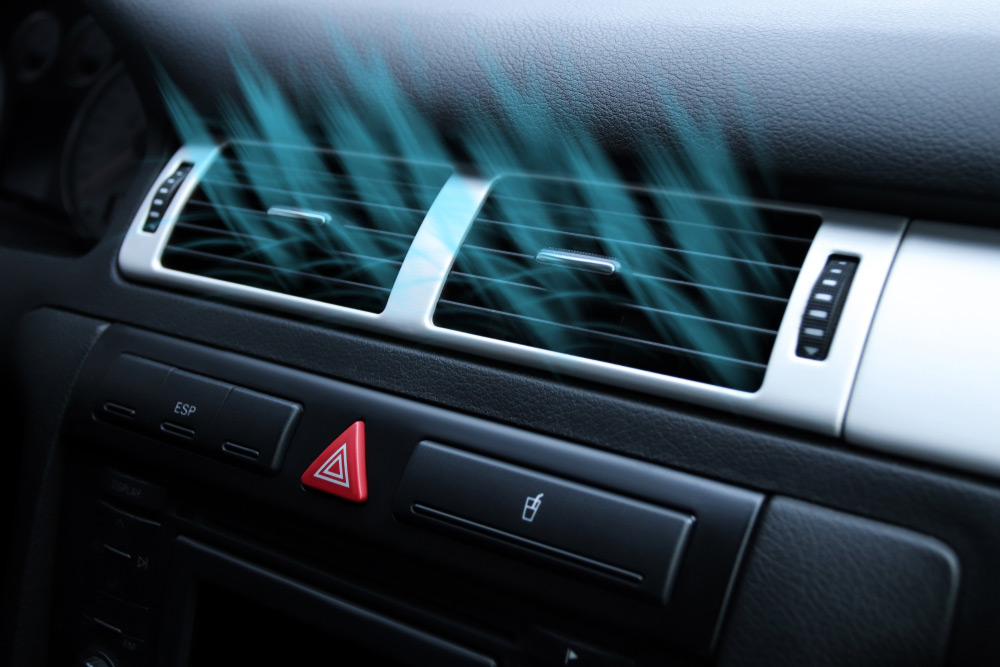Over here not having a car with a working A/C is next to impossible. As such, making sure the A/C is in working order is mandatory, otherwise you might even find yourself having a heatstroke in heavy traffic where just rolling down your windows doesn't cut it. As such, what can you do to make sure the A/C is in working condition and what can you do to make sure nothing goes wrong with it? Well, let's figure it out.
Even if you are not using the A/C, turn it on from time to time
The A/C, like almost any other system inside your car, is a mechanical component. It works because some parts do some motion somewhere, which in turn bring cold air inside the car. Now, consider that the A/C hasn't been turned on since last summer. It was turned off for over 7 months. You can imagine turning something on after such a long period of time isn't particularly easy. Parts can even seize up if you're unlucky, and break when started for the first time in a while. As such, to avoid this from happening, you turn your A/C on from time to time. By doing so, all the parts are lubricated, and when they will finally need to work at full power, they will surely be capable of doing so. If the worst-case scenario happens and something did indeed break, well, it's better to fix it when it's still cool outside, and not in the middle of July.
Let the A/C running for a while to see if you still have refrigerant
Refrigerant usually shouldn't just disappear. If that happens, there means that there's a leak somewhere in the A/C installation, which isn't good. From the factory, the A/C installation is sealed, but if the car is older or a hose happened to somehow get nipped, then losing refrigerant isn't something out of the ordinary. A car that's older than 10 years that loses a bit of refrigerant is fine, and no major cause of concern, but a large leak in a car from not even 5 years ago is a cause of concern and needs to be fixed. By letting the A/C running for a while, you are looking if the inside temperature gets as cold, and if that cold is as cold as you expect it to be. If everything is fine, then all good, if not then you should have it checked out.
Well, it appears that I might have a leak somewhere. Where can I find it?
Sadly, if you aren't inclined to tinkering and whatnot, the chances of you finding a leak are small. But, if you find something online, like a diagram of the A/C lines and the whole A/C system, you can probably find the leak with enough perseverance, and if it's small even fix it yourself if it's just a small puncture on a hose, for now anyway. Refrigerant itself is odorless and colorless, but oils are added to it so it can lubricate the installation (like the compressor). Usually this makes the refrigerant have a green tint, or some tint anyway and smell kind of oily. If you find a schematic of the A/C system or a video of someone looking around the exact same car as yours, you can also look around the hoses and components and look for some oily/wet dust, drips, and anything that might indicate a leak.
Anything else I should look out for?
The A/C installation these days is driven by a rubber belt called an accessory belt or a serpentine belt. This belt, as the name suggests, drive the engine's accessories, such as the car's alternator, the A/C compressor, maybe the car's water pump, and others. It all depends on the manufacturer. You can identify it because the serpentine belt shouldn't have any teeth. It should be some ridges and channels and that's about it. You should check this belt. If the belt is worn it can crack and a load more problems can happen too, not just the loss of the A/C system. Usually when you hear a high-pitched squeak coming from the engine it means that a belt is worn or is starting to wear down. To investigate the belt, you should press on it and see if it's loose. It shouldn't be very tight or something, but it surely shouldn't slack. If the belt is that loose, then it's worn down. Also, you can bend the belt a bit and look at the ridges with a flashlight. If those ridges show cracks, then the belt is also worn down and should be replaced.
Is this all that could go wrong with an A/C system?
Certainly not, this are just some general guidelines that anyone can more or less do or check. There might a failed part, like a failed compressor, or some electrical fault, like a failed switch. For all I know a hose can be blocked, and a duct on the inside just doesn't provide cool air whatever you tried. The A/C can have a musky and unpleasant smell. Well, at least it works, so that's good. For that you can find A/C sprays which are sprayed in A/C air intake which should have anti-bacterial properties and kill most germs and make the A/C smell normal again. But more important than anything here. If something is wrong with the A/C and you can't figure out what, just take it to a mechanic. They will know.

